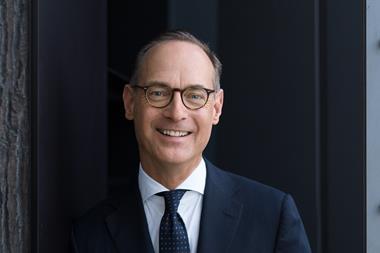There has been considerable debate about dual pricing by insurers that deal with both the direct and intermediary channels. This culminated in the referral, earlier this year, to the Office of Fair Trading which stated there were no grounds for a review on an unfair competition basis. In the heat of the debate earlier this year, brokers tended
to cry “foul”and insurers tempered their response, trying to maintain support from brokers. In reality, there are two separate business models and it would be in the industry's interest if brokers and insurers devised their future strategies recognising the realities of the market.
Dual pricing will exist for the foreseeable future – for sound business reasons – and talk by brokers that they will boycott insurers that practise this is not a sensible way forward. There is just not a viable alternative market and effort is best spent in promoting the advantages of using a broker and concentrating resources on those clients who appreciate the service brokers provide.
In a highly competitive market, customers will make their own choice and those who seek the lowest possible premiums are always likely to be costly to look after and may be best left alone, even if the alternative is losing the case to a direct insurer. Most brokers who recognise this are rebuilding their business around non-motor business, and where they handle motor they focus on connected business or niche markets.
Small respite
The Association of British Insurers (ABI) has published the statistics on source of business. These show that the direct writers' share of private motor remains static at 34%. The premium income for the sector grew by 10% so there has been some respite for the hard-pressed broker sector in this market – it still controls over 50%. However, this is likely to be short-lived as the industry made an underwriting loss of nearly £900m on a book of £5.5bn. Most of this is through broker-controlled business.
A loss of £300m can be off set against investment income, leaving a shortfall of £500m to be overcome to break even. Claims incidence levels are growing. In
the first quarter of 2000 they were at their highest level for ten years, and third party costs are increasing rapidly as a result of Ogden, ambulance chasing, no win no fee, and the government's strategy to pass NHS costs on to the insurance industry. The increases that are coming through will improve the position but there are
still more to follow. Very few large insurers want to see growth in broker-controlled motor business as they see little prospect of sustained profits through this channel. The arguments are overwhelmingly in favour of direct dealing either by telesales or by ebusiness.
However, insurers have scored one own goal in dual pricing. They have contributed to “rip-off Britain” by having totally unrealistic differences in the prices charged through separate channels. There can be no logical argument for ridiculous price gaps for insurance through the same company. Members of the public can't understand it, and it makes them feel the industry is ripping them off. This adversely affects its image, harms insurers and brokers' brands and encourages customers to shop around. In everyone's interest there should be a common pricing base, which means any dual pricing can be justified to the consumer and be within the bounds of reason.
The rates need to reflect the considerable differences in the business models between direct and insurance through brokers.
Ignoring marketing costs, direct business has a considerable cost advantage mainly because of commission payments. The internet will make this even more pronounced. This difference enables direct writers to undercut broker business by up to 10% overall. However, expenses are only part of the story.
Brokers select against insurers, as their perceived role by most customers is to offer the cheapest. In some cases business is even rebroked if a vehicle is changed mid-term. The direct writers select risks for themselves and avoid risks they do not want. If a particular insurer is the cheapest in the market through a broker, it is bound to lose money. This is why new business through brokers produces the worst loss ratio in its first year. Constant rebroking means existing business is also highly unprofitable.
Direct writers can apply unique under-writing criteria, such as lifestyle, at point of sale as they talk to each customer. It is difficult to do this via a broker, where questions are standardised on quote systems and there is no direct contact with the customer.
Loyalty
Direct writers can sell their brands directly to customers, brokers are selling their own name which can often be “we go for the cheapest”. This enables the former to build a loyal client base.
Direct insurers can use a number of tools to encourage loyalty. Brokers are more concerned with their own retention rate rather than the insurers'. Direct writers therefore have a much higher retention rate than those insurers dealing through brokers. Retention is probably the biggest driver of profitability.
In addition, direct insurers better understand customer behaviour as they have details of unsuccessful quotes. They do not get this data on broker-controlled business. By changing rates daily – there is a three-month lead time through brokers – and taking customer knowledge into account, direct can maximise acquisition, retention and profit.
For cross-selling, direct writers own the customer and can sell other products and add-on services, including financial services. Brokers will sell other insurers' products to the same customer.
Direct can manage the claims process by ensuring repair costs are kept low. This means lower claims costs.
Marketing costs for direct acquisition, in many cases, will exceed commission. However, insurers treat marketing costs to acquire customers as an investment and commission as an expense. A direct “owned” customer is worth a lot – as the valuation of dotcom companies has shown. There is no value for a customer through a broker.
The combination of expenses, risk selection, underwriting at point of sale, loyalty, cross-selling opportunities, the speed of changing rates and claims control makes direct operations an attractive channel and this makes expenditure on marketing justifiable over the long term.
A 20% to 25% pricing differential is easily justified, and in the current loss-making market this cannot be ignored.
Insurers cannot afford to ignore these dynamics and they should not be criticised for growing a direct book with sensible dual pricing, especially as motor business through brokers has lost so much money for them over the past few years.
Brokers should recognise the realities of the situation. They should decide whether there is a future for them in a commodity-led business and, if so, seek to replicate the dynamics of the direct market for their insurer panel. This may mean:
If they feel this is not achievable, then they need to consider a change of strategy. This may mean leaving the market for non-connected motor business and concentrating on existing commercial customers and niche motor markets.
Dual pricing will not disappear and it will certainly become even more pronounced as ecommerce becomes more successful.
For the good of the industry, of their own brands and to introduce some element of pricing stability, insurers should remove the excesses of pricing differences. It would help if insurers were clear about their attitude and didn't try to appease brokers – leaving them to make their own choices in full recognition of where the market is heading.
Hosted by comedian and actor Tom Allen, 34 Gold, 23 Silver and 22 Bronze awards were handed out across an amazing 34 categories recognising brilliance and innovation right across the breadth of UK general insurance.













































